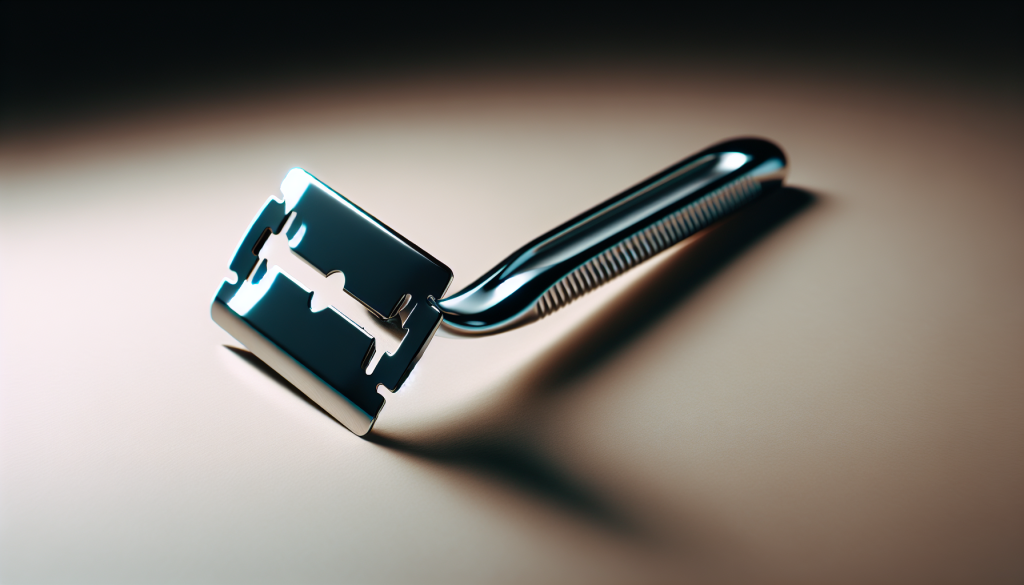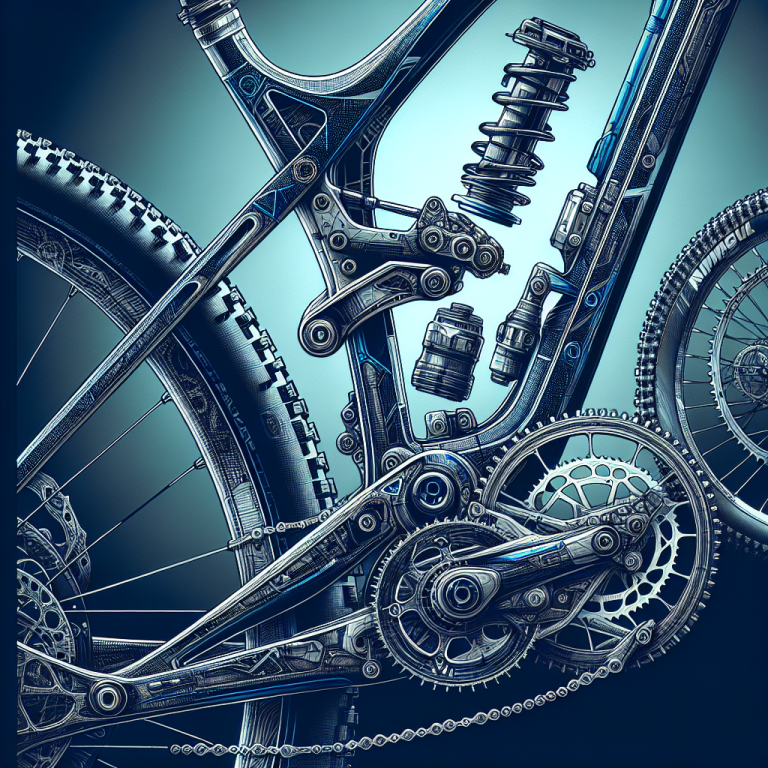Have you ever wondered why cyclists choose to shave their legs? It’s a question that has likely crossed your mind as you see those sleek, spandex-clad riders zooming past, their smoothly shaved legs glistening in the sun. While it may seem like a strange grooming ritual, there are actually practical reasons behind this seemingly unconventional practice. Whether it’s for performance-enhancing aerodynamics, injury prevention, or simply a way to show off those hard-earned leg muscles, there’s more to the story than meets the eye. Let’s take a closer look at why cyclists choose to embrace the razor and bare it all on the road.
Table of Contents
ToggleAesthetics
Cultural norms and traditions
One of the main reasons why cyclists shave their legs is due to cultural norms and traditions within the cycling community. It has become a widely accepted practice and is seen as a symbol of being a dedicated cyclist. Many professional cyclists shave their legs as a way to adhere to this tradition and to show their commitment to the sport.
Flaunting muscular definition
Shaving the legs also allows cyclists to display their muscular definition more prominently. When the hair is removed, it becomes easier to see the contours of the muscles, making them more visible to others. This not only enhances the overall aesthetic appeal of cyclists but also showcases their physical strength and athleticism.
Visibility of muscle tone during races
During races, cyclists are often wearing form-fitting kits that highlight their physique. By shaving their legs, cyclists can better showcase their muscle tone, allowing others to see the hard work they have put into their training. This can have a psychological effect on both the cyclists and their competitors, boosting their confidence and asserting their presence on the racecourse.
Performance Enhancement
Aerodynamics
One of the key performance benefits of shaving legs is improved aerodynamics. When cyclists shave their legs, it reduces air resistance against their skin, allowing them to move more smoothly through the air. This can lead to faster speeds and increased overall performance, particularly in time trials or stages where every second matters.
Reducing wind resistance
Wind resistance is a major factor that can impede a cyclist’s speed. By shaving their legs, cyclists can minimize the drag caused by hair, allowing them to cut through the wind more efficiently. This reduction in wind resistance can lead to improved speed and performance, especially during sprints or when riding at high speeds.
Enhancing overall speed
The combination of better aerodynamics and reduced wind resistance ultimately leads to enhanced overall speed. Shaving legs helps in streamlining the body, making it easier for cyclists to maintain high speeds without wasting unnecessary energy. This can be especially advantageous during long races or challenging climbs where every ounce of energy conservation counts.
Improving efficiency
Shaving legs can also improve a cyclist’s efficiency by reducing the friction between the skin and their clothing. When the hair is removed, there is less resistance against the fabric, allowing for smoother movements and minimizing energy loss. This enhanced efficiency can contribute to better endurance and performance, enabling cyclists to ride longer and push harder.
Reducing drag
Drag is a force that acts against a cyclist’s forward motion and can significantly impact their speed. By shaving their legs, cyclists can reduce the drag caused by hair, enabling them to experience less resistance as they pedal. This reduction in drag can have a positive effect on a cyclist’s overall performance, particularly in flat terrain or during fast-paced group rides.
Injury and Recovery
Reducing road rash severity
Road rash is a common injury that cyclists may experience in the event of a crash or fall. When the skin comes into contact with the rough surface of the road, the friction can lead to painful abrasions. By shaving their legs, cyclists can minimize the severity of road rash as there is less hair to get caught in the wound and cause further damage. This can expedite the healing process and reduce the risk of infection.
Facilitating easier wound cleaning
In the unfortunate event of an injury, keeping wounds clean is crucial for proper healing. Shaving legs can make the cleaning process easier as there is no hair to obstruct access to the wound. This allows for thorough cleansing and disinfection, reducing the risk of complications and promoting faster recovery.
Enhancing the application of healing products
Shaving legs can also facilitate the application of healing products, such as ointments or creams, to injured areas. Without hair in the way, these products can be directly applied to the skin, maximizing their effectiveness in promoting healing and reducing inflammation. This can aid in the recovery process and alleviate discomfort caused by injuries.
Easier inspection of injuries
When cyclists shave their legs, it becomes easier to inspect injuries and monitor their progress. Without the presence of hair, they have a clear view of the affected areas, allowing them to identify any changes in the wound or signs of infection. This enables cyclists to seek appropriate medical attention promptly and take necessary measures to ensure proper recovery.
Improved massage and physical therapy
For cyclists who incorporate massage and physical therapy into their recovery routine, shaved legs can provide additional benefits. Without hair, it is easier for therapists to apply techniques such as deep tissue massage or use tools like massage cups without interference. This can enhance the effectiveness of these treatments, aiding in muscle recovery and reducing post-exercise soreness.
Better management of muscle cramps
Muscle cramps are a common occurrence among cyclists, especially during intense rides or races. Shaving legs can improve the management of muscle cramps as it allows for better visual and tactile assessment of muscle fibers. This enables cyclists to identify areas of tension or tightness and apply appropriate techniques, such as stretching or massage, to alleviate discomfort and prevent further cramping.
Easing the removal of adhesive bandages
In cases where cyclists need to apply adhesive bandages to wounds or minor injuries, shaving legs can make the removal process easier and less painful. Without hair in the way, the bandages can be effortlessly removed, reducing the risk of additional injury or discomfort. This promotes proper wound care and facilitates the healing process.
Hygiene
Easier cleaning and rinsing of skin
Maintaining proper hygiene is paramount for cyclists, especially after long rides. Shaving legs makes it easier to clean and rinse the skin thoroughly. Without hair, there are fewer areas for dirt, sweat, or other debris to accumulate, reducing the risk of skin irritations or infections. This promotes cleanliness and overall skin health.
Reducing bacterial growth
Bacterial growth on the skin can contribute to various skin problems, including folliculitis or other infections. Shaving legs can help reduce the opportunity for bacteria to thrive as the hair, which can harbor bacteria, is removed. This can minimize the risk of skin-related issues and promote healthier skin for cyclists.
Avoiding unpleasant smells
Sweat and body odor can be a common issue for cyclists, particularly after exertion. Shaving legs can help decrease the unpleasant smell associated with sweating as there are no hairs to trap perspiration and bacteria. This can contribute to a more pleasant environment during rides and foster better personal hygiene practices.
Preventing skin irritations
For cyclists who spend long hours in the saddle, friction between the skin and clothing can lead to skin irritations such as chafing or saddle sores. Shaving legs can minimize the friction against the skin, reducing the likelihood of these irritations. Smooth skin allows for comfortable movement and can prevent discomfort during rides, enhancing the overall cycling experience.
Safety
Easier identification and treatment of road rash
When road rash occurs, it is important to quickly assess the severity of the injury and provide appropriate treatment. Shaved legs allow for easier identification of road rash, as there are no hairs to obscure the extent of the abrasions. This aids in determining whether immediate medical attention is necessary and ensures prompt and effective treatment.
Improved visibility of muscle movements
During cycling, proper body mechanics and muscle movements are essential for optimal performance and injury prevention. Shaved legs enhance the visibility of these muscle movements, both for the cyclist and for coaches or trainers. This facilitates the identification of any imbalances or incorrect form, allowing for targeted corrections and reducing the risk of overuse injuries.
Enhanced use of compression garments
Compression garments are commonly used in cycling to improve circulation, aid in muscle recovery, and provide support. Shaving legs enhances the effectiveness of these garments as there are no hairs to interfere with the compression or disrupt the fit. This ensures that cyclists can fully benefit from the advantages of compression garments and maximize their performance potential.
Benefits in the event of accidents or falls
In the unfortunate event of accidents or falls, shaved legs can provide added benefits. It allows for easier application of bandages or dressings to the injured areas without interference from hair. Additionally, it facilitates the cleaning and disinfection of wounds, reducing the risk of infection and promoting faster healing. These advantages contribute to the overall safety and well-being of cyclists.
Ceremonial
Victory tradition in cycling
Cycling has a rich history of traditions, and one such tradition is shaving legs after a significant victory. This act symbolizes a cyclist’s triumph and dedication to the sport. It serves as a celebratory ritual and is often done as a way of commemorating a notable achievement, marking the end of a successful race or season.
Symbolic representation of a professional cyclist
Shaved legs have become a symbolic representation of professional cyclists and their commitment to the sport. It signifies a level of professionalism and dedication that is associated with elite athletes. By following this tradition, cyclists can align themselves with the values and standards of the professional cycling community.
Promoting camaraderie and unity among cyclists
The act of shaving legs is often done together by cyclists, creating a sense of camaraderie and unity. It fosters a shared experience and can strengthen bonds among teammates or fellow riders. This ceremonial aspect of cycling promotes a supportive and encouraging environment within the cycling community, bringing individuals together through a common tradition.
Sense of belonging to the cycling community
Shaved legs are considered a hallmark of belonging to the cycling community. By adhering to this tradition, cyclists can establish a sense of familiarity and connection with other cyclists, whether they are recreational riders or professionals. It reinforces their identity as part of a larger group and can enhance their overall experience within the cycling community.
Team Unity
Creating a sense of team cohesion
Wearing matching team kits and shaving legs help create a sense of team cohesion among cycling teams. When all team members shave their legs, it demonstrates a commitment to the team’s goals and objectives. It fosters a sense of unity and can improve communication and cooperation within the team.
Uniformity in appearance
Uniformity in appearance is important for cycling teams as it portrays a professional and cohesive image. Shaved legs contribute to this uniformity by presenting a consistent and streamlined look among team members. It signifies that they are part of a collective effort and reinforces the team’s branding and identity.
Stronger identification as a team
When cyclists shave their legs and wear matching team kits, it helps create a stronger identification as a team. It allows spectators, sponsors, and other cyclists to easily recognize and associate them with their respective teams. This promotes team pride and can generate support and recognition both on and off the racecourse.
Promoting professionalism within the team
Professionalism is an essential aspect of cycling teams, and shaving legs is one way to promote this quality. By adopting a practice commonly seen in professional cycling, teams can instill a sense of professionalism within their members. It sends a message that they take their sport seriously and are committed to performing at their best.
Psychological Factors
Increased confidence and self-esteem
Shaving legs can have a positive impact on a cyclist’s confidence and self-esteem. When cyclists see the contours of their muscles and the result of their training more clearly, it can boost their self-confidence. This increased confidence can translate into improved performance and a stronger belief in their abilities as cyclists.
Psychological advantage over opponents
The visibility of shaved legs can create a psychological advantage over opponents. It can be intimidating for competitors to see the defined muscles and smooth legs of their rivals, potentially making them question their own preparedness. This psychological edge can give cyclists a mental advantage, helping them stay focused and maintain their competitive mindset during races.
Mental preparation and focus
Shaving legs can be a part of a cyclist’s pre-race routine, serving as a ritual that aids in mental preparation and focus. By engaging in the act of shaving, cyclists can enter a state of concentration and mentally transition into race mode. It can help clear the mind, establish a routine, and create a sense of readiness for the upcoming challenges on the racecourse.
Psychosocial benefits among athletes
Cyclists often form close-knit communities and establish strong relationships with their peers. Shaving legs can have psychosocial benefits in this context by fostering a sense of belonging and camaraderie. It provides cyclists with a shared experience, a topic of conversation, and a common understanding. These connections contribute to overall mental well-being and can enhance the cycling experience.
Enhanced mental toughness
Shaving legs can also contribute to the development of mental toughness among cyclists. The act of voluntarily removing hair from their bodies signifies a willingness to endure discomfort and embrace discipline. This mental fortitude can translate into other aspects of cycling, enabling cyclists to overcome challenges, push their limits, and maintain resilience in the face of adversity.
Traditional Beliefs
Historical practices of professional cyclists
Shaving legs has been a longstanding practice among professional cyclists, dating back to the early days of the sport. It has become a tradition that has been carried forward by subsequent generations of cyclists. Many cyclists adhere to these historical practices out of respect and as a way to preserve the traditions of their sport.
Superstitions and rituals
Cyclists, like athletes in many other sports, often have their own set of superstitions and rituals. Shaving legs can be seen as a ritual that brings good luck or ensures a favorable outcome. The act of shaving can be accompanied by other beliefs or practices, such as wearing specific clothing or following a particular routine, further deepening the connection between shaving legs and cycling success.
Perceived psychological benefits
While the psychological benefits of shaving legs may be subjective, many cyclists believe that it offers them psychological advantages. Whether it is the boost in confidence, the sense of conforming to a professional standard, or the belief that it signifies commitment, these perceived psychological benefits play a significant role in why cyclists continue to shave their legs.
Continuation of cycling traditions
Cycling is a sport rich in traditions, and shaving legs is one of the many customs that have been passed down through generations of cyclists. By continuing to shave their legs, cyclists pay homage to these traditions and keep them alive in the modern cycling era. It reinforces the historical and cultural significance of these practices and helps maintain the unique identity of the sport.
Cultural Influence
Emulating professional cyclists
Cycling enthusiasts often look to professional cyclists as role models and seek to emulate their practices and behaviors. Shaving legs is one area where enthusiasts mimic the actions of their professional counterparts. By doing so, they feel a closer connection to the sport and the cycling community, aligning themselves with the cultural practices and standards associated with the sport.
Popularity among cycling enthusiasts
Shaving legs has gained popularity not only among professional cyclists but also among cycling enthusiasts. It has become a trend embraced by individuals who are passionate about the sport and strive to fully immerse themselves in the cycling culture. The practice has transcended the professional realm and has become a widely accepted norm within the broader cycling community.
Peer pressure and social influence
Within the cycling community, there can be an element of peer pressure and social influence that encourages individuals to shave their legs. As more cyclists adopt the practice, it can create a sense of conformity and the perception that it is an essential aspect of being a cyclist. This influence can sway individuals to follow suit and shave their legs, either to fit in or to be seen as serious cyclists.
Perceived importance in the cycling community
Shaved legs have become associated with the cycling community, and their importance is often emphasized by cyclists themselves. The act of shaving legs is seen as a symbol of dedication, professionalism, and commitment to the sport. This perception within the cycling community can influence individuals to follow suit, believing that it is an integral part of being a cyclist.
In conclusion, the practice of cyclists shaving their legs serves multiple purposes and has a range of benefits that extend beyond mere aesthetics. From performance enhancement and injury prevention to psychological factors and cultural influences, there are numerous reasons why cyclists choose to shave their legs. Whether it’s to gain a competitive edge, demonstrate dedication to the sport, or foster a sense of camaraderie, the act of shaving legs has become deeply ingrained in the cycling world. Ultimately, the decision to shave or not to shave remains a personal choice for each cyclist, but it is undeniable that the tradition holds a significant place within the cycling community.








